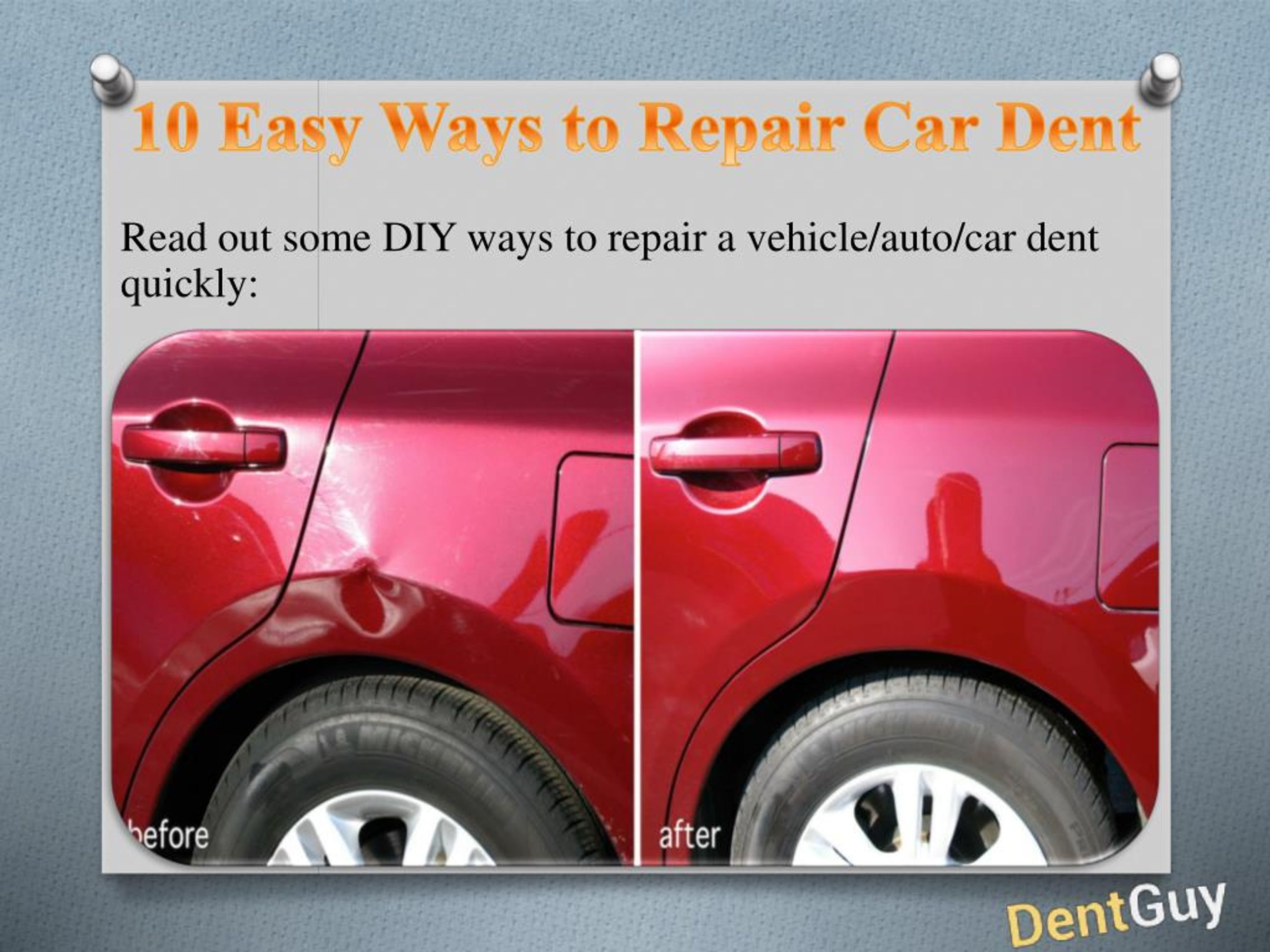Dents and dings on your vehicle can be unsightly and frustrating, diminishing its appearance and resale value. Fortunately, paintless dent repair (PDR) offers a solution to this common problem without the need for expensive and time-consuming conventional repair methods. In this comprehensive guide, we will explore paintless dent repair techniques, how they work, and how they can restore your vehicle’s appearance to its former glory.
Understanding Paintless Dent Repair (PDR)
Paintless dent repair (PDR) is a specialized technique used to remove minor dents and dings from a vehicle’s exterior surfaces without the need for repainting or refinishing. Unlike conventional dent repair methods that involve sanding, filling, and repainting the damaged area, PDR relies on precision tools and techniques to massage the metal back into its original shape, restoring the vehicle’s appearance with minimal disruption.
Key Components of Paintless Dent Repair:
- Specialized Tools: PDR technicians use a variety of specialized tools, including metal rods, picks, and dent removal hammers, to access and manipulate the damaged area from behind the panel.
- Technique and Skill: PDR requires precision and skill to accurately assess the damage, access the affected area, and apply the necessary pressure and manipulation to restore the metal to its original shape.
- Access Points: PDR technicians identify and utilize access points such as door openings, trim panels, or window openings to reach the damaged area from behind the panel without causing further damage to the paint or surrounding surfaces.
How Paintless Dent Repair Works
The paintless dent repair process involves several steps, each designed to gradually restore the damaged area to its original condition. While the exact techniques may vary depending on the size, location, and severity of the dent, the fundamental principles remain consistent:
Step-by-Step Process:
- Assessment: The first step in the PDR process is to assess the extent of the damage and determine if the dent is suitable for paintless repair. PDR technicians examine the size, location, and accessibility of the dent to determine the best approach for repair.
- Access: Once the damage is assessed, the technician identifies access points and removes any necessary panels or trim pieces to gain access to the backside of the dent. This allows the technician to manipulate the metal from behind the panel without causing damage to the paint or surrounding surfaces.
- Manipulation: Using specialized tools and techniques, the technician carefully massages the metal back into its original shape, working gradually and methodically to reduce the size and depth of the dent. This process may involve pushing, pulling, or tapping the metal to reshape it without damaging the paint or finish.
- Finishing Touches: Once the dent is successfully manipulated back into place, the technician performs any necessary finishing touches to ensure a seamless repair. This may involve smoothing out any remaining imperfections, polishing the area, or applying protective coatings to prevent future damage.
- Quality Inspection: Finally, the repaired area is thoroughly inspected to ensure that the dent has been fully restored and that the surrounding surfaces are undamaged. Any remaining imperfections are addressed, and the vehicle is returned to its owner looking as good as new.
Advantages of Paintless Dent Repair
Paintless dent repair offers numerous advantages over conventional dent repair methods, making it an attractive option for vehicle owners seeking a fast, cost-effective, and non-invasive solution to minor dents and dings. Some of the key benefits of PDR include:
1. Cost-Effectiveness: PDR is often more affordable than conventional dent repair methods, as it requires fewer materials, less labor, and shorter repair times.
2. Time Efficiency: PDR can be completed in a fraction of the time required for conventional dent repair, allowing vehicle owners to get back on the road quickly without lengthy downtime.
3. Preservation of Original Paint: Unlike conventional dent repair methods that require sanding, filling, and repainting, PDR preserves the vehicle’s original paint finish, maintaining its appearance and resale value.
4. Non-Invasive Repair: PDR is a non-invasive repair method that does not require drilling, sanding, or filling, minimizing the risk of further damage to the vehicle’s exterior surfaces.
5. Environmentally Friendly: PDR is an environmentally friendly repair method that eliminates the need for harsh chemicals, paints, and solvents, reducing waste and pollution associated with conventional repair processes.
Common Applications of Paintless Dent Repair
Paintless dent repair can be used to address a wide range of minor dents and dings on a vehicle’s exterior surfaces, including:
- Door Dings: Small dents caused by impacts from car doors or shopping carts.
- Hail Damage: Dents caused by hailstones during severe weather events.
- Minor Collisions: Minor dents resulting from low-speed collisions or accidents.
- Parking Lot Damage: Dents and dings caused by careless parking or vehicle maneuvers.
- Creases and Wrinkles: Shallow creases or wrinkles in the metal panels caused by impacts or pressure.
DIY Paintless Dent Repair Tips
While professional paintless dent repair is recommended for more severe or complex damage, there are some DIY tips and techniques that vehicle owners can use to address minor dents and dings:
- Hot Water Method: Pouring hot water over the dent and using a plunger to pull it out can sometimes help to pop out shallow dents.
- Dent Repair Kits: DIY dent repair kits are available that utilize suction cups, dent pullers, or adhesive tabs to remove minor dents and dings.
- Dry Ice Method: Using dry ice to gently heat and cool the dented area can sometimes help to pop out shallow dents caused by temperature changes.
Conclusion
Paintless dent repair is a versatile and effective technique for restoring your vehicle’s appearance by removing minor dents and dings without the need for repainting or refinishing. By understanding the principles and techniques of PDR, vehicle owners can take proactive steps to address minor damage and maintain the appearance and value of their vehicles for years to come. Whether you choose to enlist the services of a professional PDR technician or attempt DIY repairs, paintless dent repair offers a cost-effective, time-efficient, and non-invasive solution to common automotive imperfections.



